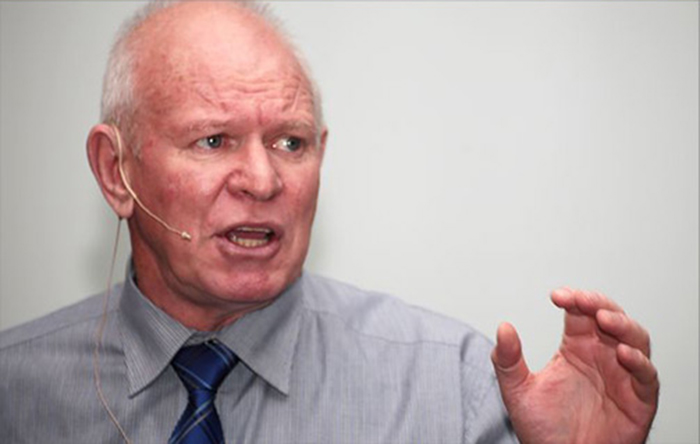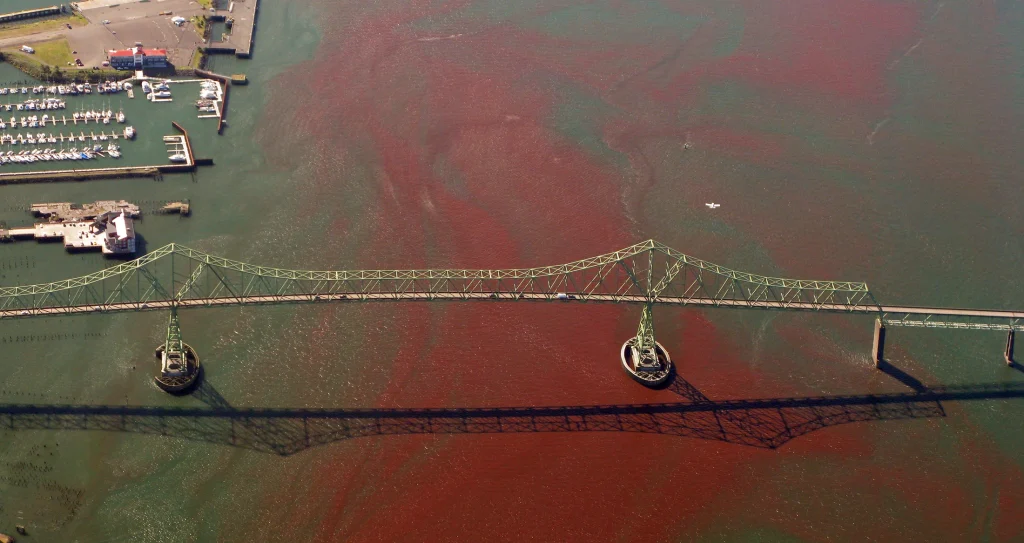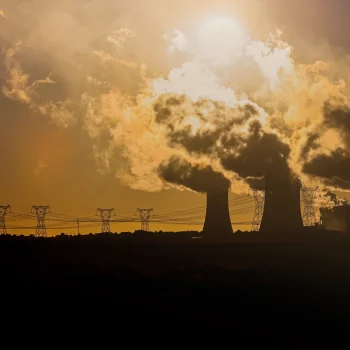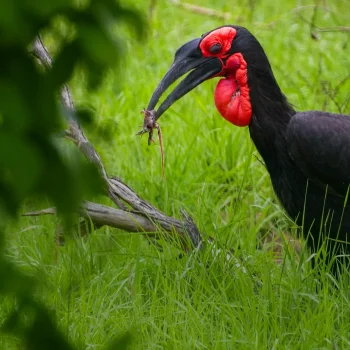Social activism – and much better governance – is needed to help address South Africa’s biggest long-term challenge: chronic water pollution, say experts.
By Savannah Burns
First published by Daily Maverick
Rivers running red, an explosion of toxin-producing cyanobacteria, and the possible emergence of multi-drug resistant pathogens – just a few of the potential threats lurking in South Africa’s polluted and stretched water systems.
Prof Antony Turton, a specialist in water resource management, warns that the country has reached the absolute limit of its finite water supply and he identifies the country’s sewage crisis as “the single biggest priority” and our “biggest long-term challenge”.
Turton was speaking at the 20th Tipping Points online seminar, which convened under the theme “SA’s Water whirlpool of pain”, to ponder the sorry state of the country’s water resources and to offer solutions.

Joining Turton, who facilitated the 20 March webinar, were panelists Prof Sylvester Mpandeli, an executive manager at the Water Research Commission, and Mariette Liefferink, an activist and chief executive of the Federation for a Sustainable Environment.
Prof Hamanth Kasan, president elect of the International Water Association, was unable to attend the Oppenheimer Generations Research and Conservation webinar, but Turton stepped into the breach, fielding questions and providing commentary of a health and microbiology bent.
Beware flesh-eating bacteria
Turton and his colleagues detailed the parlous state of South Africa’s rivers, in part the consequence of the decline or collapse of municipal wastewater treatment works.
Inevitably, this water reached the sea putting the health of people at the coast at risk.
“A lagoon is the terminal end of everything that happens upstream of it,” said Turton, “and it’s not inconceivable we’ll see the emergence of multidrug resistant pathogens coming out of these places.”
He explained that sewage pooling in lagoons not only contained human waste, but also pathogens, alongside partially metabolized medications, such as antiretrovirals, antibiotics, and spiked levels of estrogen from birth control pills.
“There have been eight to 10 cases I’m aware of where people have been in contact with certain bacteria in the river with an open wound,” he said, “and that bacteria has been flesh-eating bacteria.”
Liefferink described the state of waste water treatment works as “dire and widespread” and spoke of a crisis facing our water resources.
She cited the country’s water and sanitation master plan which estimated a R333-billion shortfall in maintenance and investment in water infrastructure over the next 10 years, compounded by a lack of skilled water engineers. This would contribute to a projected water deficit of 17% by 2030.
Adding to South Africa’s water woes were recurrent drought, climate variations and inequities in access to water and sanitation.
Liefferink quoted a United Nations Special Rapporteur on Toxics and Human Rights who last year noted a “crude legacy of environmental racism… of water and chemical pollution” that still affected South Africa’s poor and would require structural, economic and legislative interventions to fix.
Acid mine water and a blooming problem
Mine acid water drainage was a big part of the problem.
“It is known that acid mine water drainage is responsible for the most costly environmental and socio-economic impacts – and it may continue for many years after mines are closed,” said Liefferink.
Turton told delegates that South Africa has perhaps the most eutrophic rivers in the world. This is when an overabundance of nutrients enter the water, typically from sewage, industrial waste and farming runoff and fertilizers. Algae feed on the nutrients, growing, spreading, and turning the water green and blue. Algae blooms can smell bad, block sunlight, and release toxins.
Red algae was increasingly found too.
“It’s not too inconceivable in the not-too-distant future that we’re going to see rivers turning red,” said Turton.
Red alert
Only a few species of algae are known for their ability to turn water red when present in high numbers. Among them is the microalgae, Euglena Sanguinea, blooms of which have been found at different locations in Mpumalanga and Limpopo over the past few years, and more recently in Hartebeestpoort.
The species is toxic, causing fish kills and inhibiting mammalian tissue growth.
Blooms of another hazardous algae, Cylindrospermopsis raciborskii, are also becoming increasing prevalent in South African freshwaters, especially in the lower reaches of the Orange River, said Turton. The toxic effect on humans is unknown but it’s another potent fish killer.
He said the significance of these species was that they were spreading quickly and had a comparative advantage over other dominant blue-green algae species. Changes to the alkalinity of aquatic systems brought about by mine water drainage may have been responsible for this.
“So, we’ve got a whole lot of issues coming out of there from a tipping point perspective,” he said.

Faecal woes
Add into the mix, 7-billion litres of sewage getting discharged into rivers and dams in South Africa every day, and the country’s water quality crisis can only worsen.
Turton warned that unless urgently addressed, it was only a matter of time before these “severely degraded” water bodies start having serious human health implications.
He reminded delegates of the fatal outbreak of cholera north of Pretoria last year, which was “directly correlated to management of sewage at a specific waste water treatment”.
“Our water boards are burdened to the point of not being able to stay afloat in the not-too-distant future.”
Tuton said the rate at which South African rivers were changing had become “so rapid that I believe it will start exceeding our institutional capacity to cope”.
Liefferink agreed, noting that from 1999 to 2011, there had been a 500% increase in the degree to which the country’s main rivers were classified as being in a poor ecological condition, with some rivers pushed beyond the point of recovery.
“It’s not macrobiotically safe to drink the water in almost half (46%) of our drinking water systems,” said Liefferink, quoting from the Blue and Green Drop reports which found that 64% of wastewater treatment systems were in poor or critical states, and that 47% of the water treated for municipal use went to waste or was not paid for.
How to turn it around
Mpandeli acknowledged that many pressing problems faced the South African water sector, including the fact that we are a dry country, the threat of climate change, and the growing thirst from a population that had reached 66-million.
But he remained optimistic.
In reply to a question from the floor, he said: “The challenges could be addressed if we put our heads together.
“Various institutions are addressing water issues – If we have relevant technologies, skills and expertise we will be able to overcome the challenges we are facing. We can find sustainable solutions but we need to work together.”

Mpandeli, who has been working in the water and agriculture sectors for 24 years, said the Water Research Commission (WRC) had been striving to get different government departments and organisations to work together, reminding them of the water-energy-food nexus.
This is a concept (elaborated on by Tauton), that posits that the availability or provision of water, energy and water are inextricably linked.
He said the commission had been “trying to break the silo mentality among departments” and had come up with interesting recommendations for policy-makers in the past 11 years.
The research it supported looked not only at the biophysics of water but at socio-economics too and there had been a move away from theory to practice, with projects that sought to demonstrate or trial technologies and decision-support tools, particularly in vulnerable communities.
In response to another question from the floor, Mpandeli said the WRC was supporting a number of projects focusing on tackling alien and invasive plant species which threatened water catchment areas.

“We are also looking at making sure some of the byproducts from alien invasive species are used by local communities. We do believe this is a long-term initiative that the WRC is driving with partners to come up with sustainable solutions. We are also training community members to clear alien and invasive species.”
He stressed the WRC’s mandate was to drive research and innovations, but through partnerships it was assisting with opportunities for job creation.
Policy and its limits
Liefferink outlined proposed amendments to legislation that would licence water service providers and empower the Department of Water and Sanitation to revoke the licence of providers and water authorities for persistent non-compliance.
She also spoke about the 2022 policy on mine water, which enshrined the polluter-pays principle and stresses the reuse of mine water, as well as [proposed amendments to the National Water Act. These amendments include “aggressive restrictions to restore and protect ecological infrastructure”.
However, Liefferink noted that “South Africa is known to be very rich in policies and in strategies and in guidelines, but very poor in implementation”.
She spoke about the good work being done by private companies to assist the state, including mining companies that were assisting with the upgrade and maintenance of wastewater treatment works.
Liefferink is perhaps best known for her work as an environmental activist, and quoting from the national development plan for 2030, advised delegates that an active citizenry and social activism were necessary for democracy and development to flourish…
“…To raise the concerns of the voiceless and marginalized and hold government, business and all leaders in society accountable for their actions.” – Additional reporting, Matthew Hattingh and Fred Kockott, Roving Reporters.
This story was produced with support from Jive Media Africa – science communication partner to Oppenheimer Generations Research and Conservation.
About the Author
Savannah Burns is a freelance writer and Roving Reporters correspondent.











